Abstract
Freshly isolated hearts of fetal mice of gestational ages ranging between 12 and 22 days (term) were exposed to several concentrations of a variety of chronotropic agents. Acetylcholine (10−4-10−2 M) caused marked bradycardia in all hearts, even after only 12-14 days' gestation (i.e., even before cardiac innervation had occurred), and the intensity of the response increased steadily with advancing age throughout gestation. Responsiveness to norepinephrine was present but minimal at 12-14 days, so that mean atrial rate rose by < 10% with a maximal concentration of the drug (10−5 M); responsiveness became more marked by 15-16 days (just after the time atrial innervation is thought to begin) and still greater effects appeared just before term. Glucagon had no effect in hearts of < 17 days' gestational age, but caused tachycardia thereafter, indicating that cardiac responsiveness to glucagon differentiates later than does responsiveness to norepinephrine. Responses to theophyl-line in 12-14 day hearts exceeded those to norepinephrine, indicating that the drug can affect heart rate independently of its ability to cause release of endogenous catecholamines. In contrast, tyramine caused no response until 21-22 days, well after the time the beta-receptor has differentiated and after innervation is fairly well developed, suggesting that the drug's primary sympathomimetic effect is indirect rather than direct. Dibutyryl cyclic AMP did not cause tachycardia at any fetal age.
It is concluded that maturation of responsiveness of the mouse heart to cardioactive drugs develops in specific patterns for different agents. The identification of differential patterns of maturation for various drugs may provide valuable means for characterizing the differentiation of specific receptors and for investigating possible mechanisms of action of the drugs.
Full text
PDF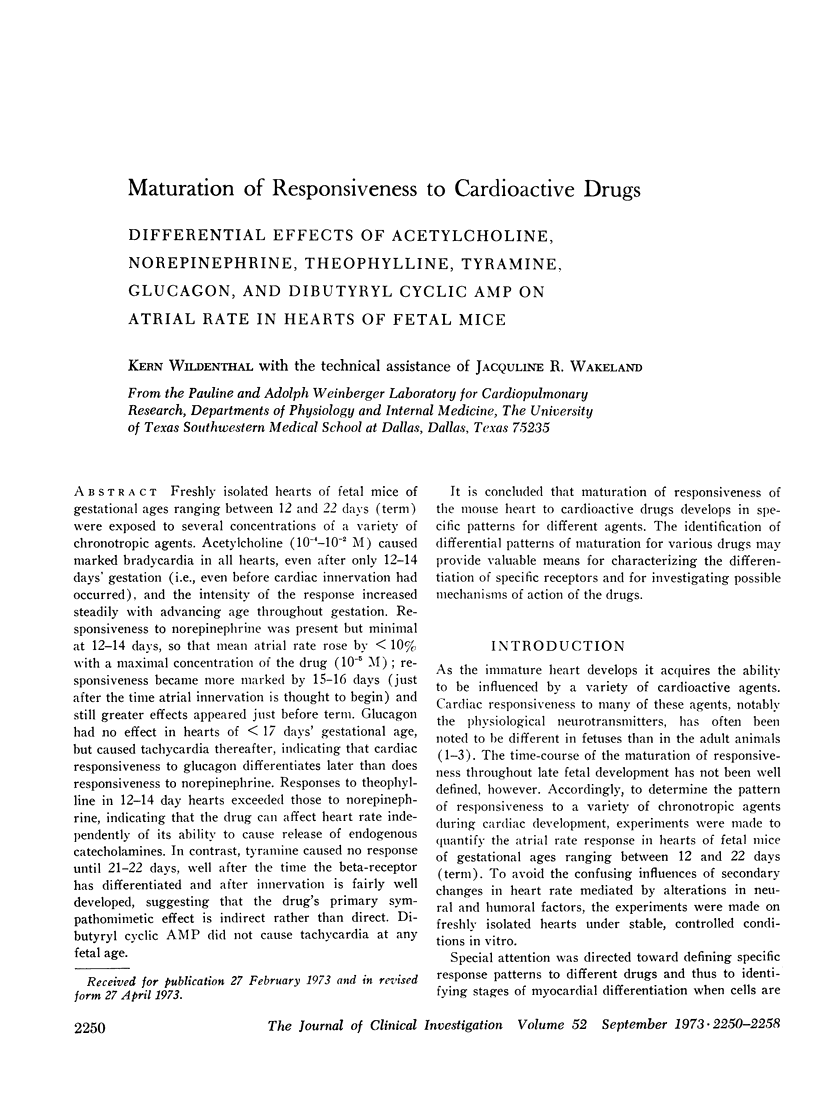
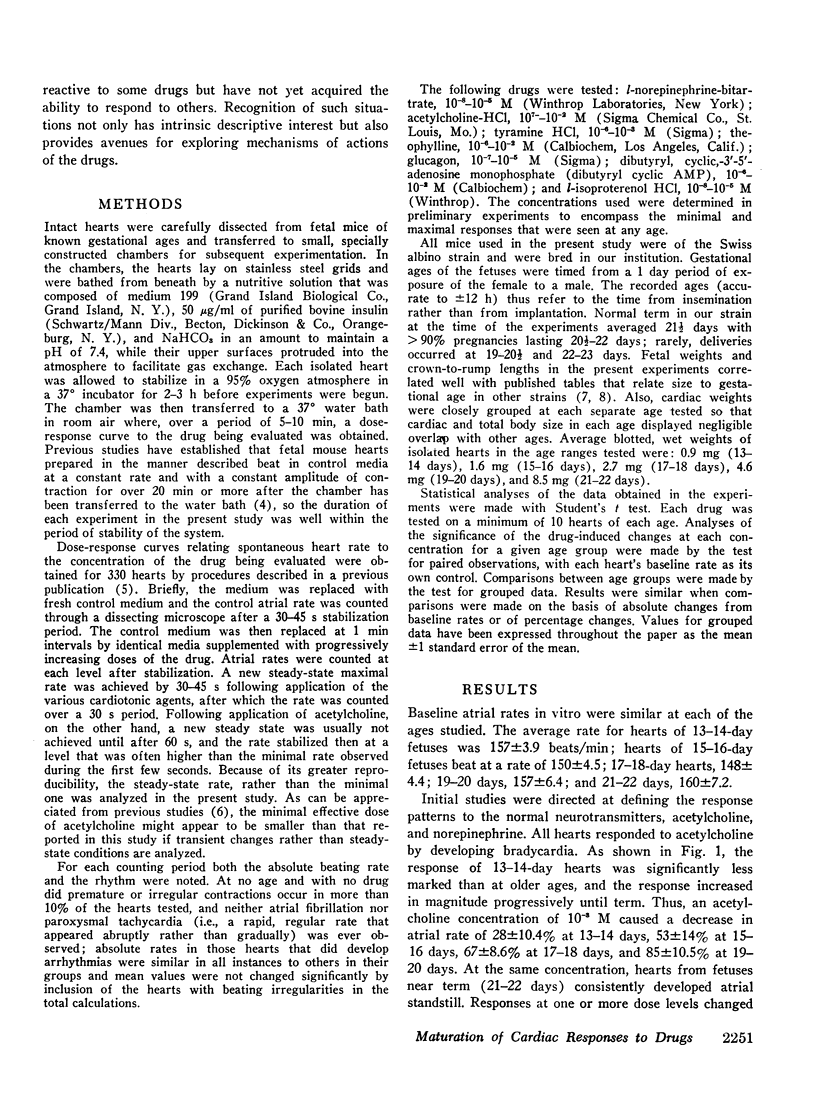
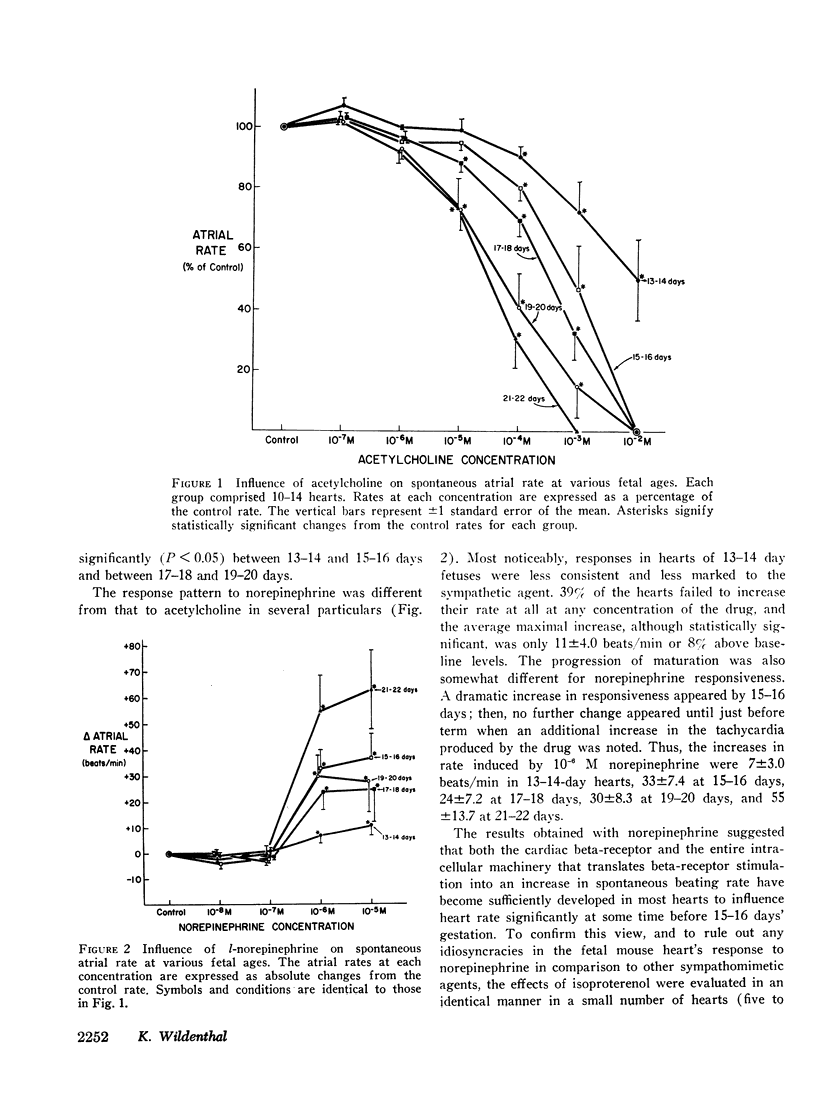
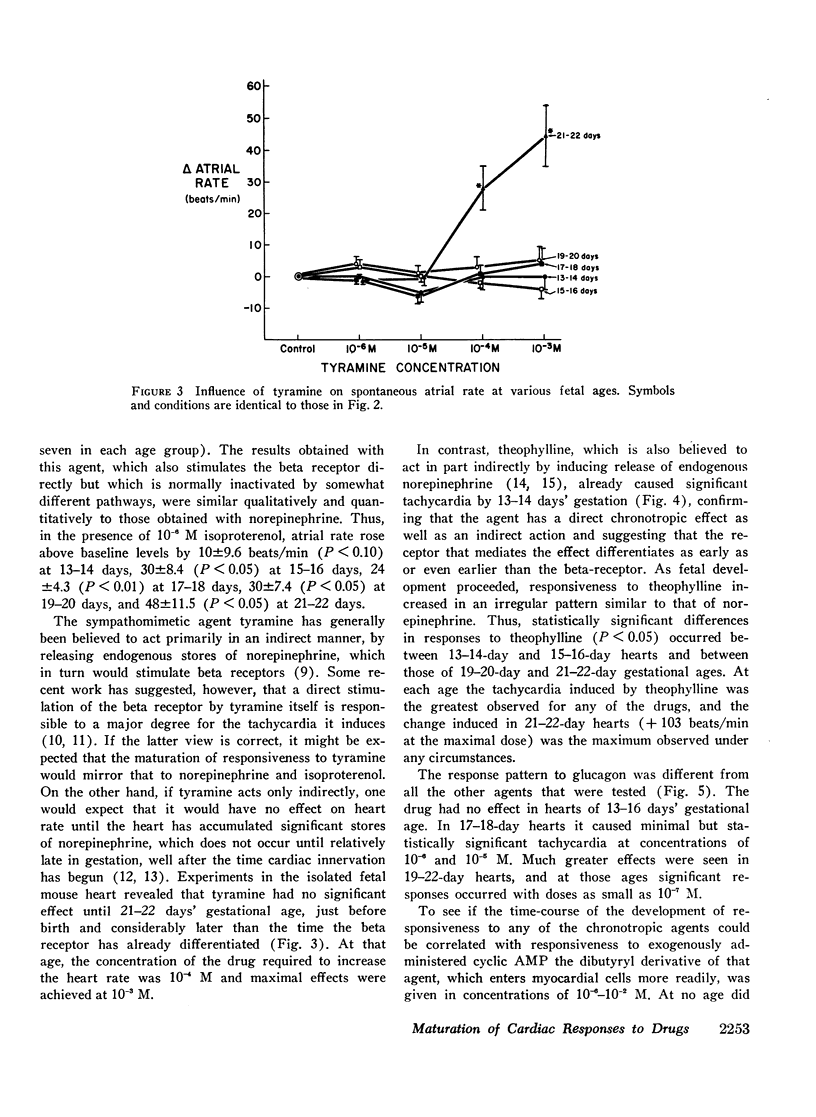
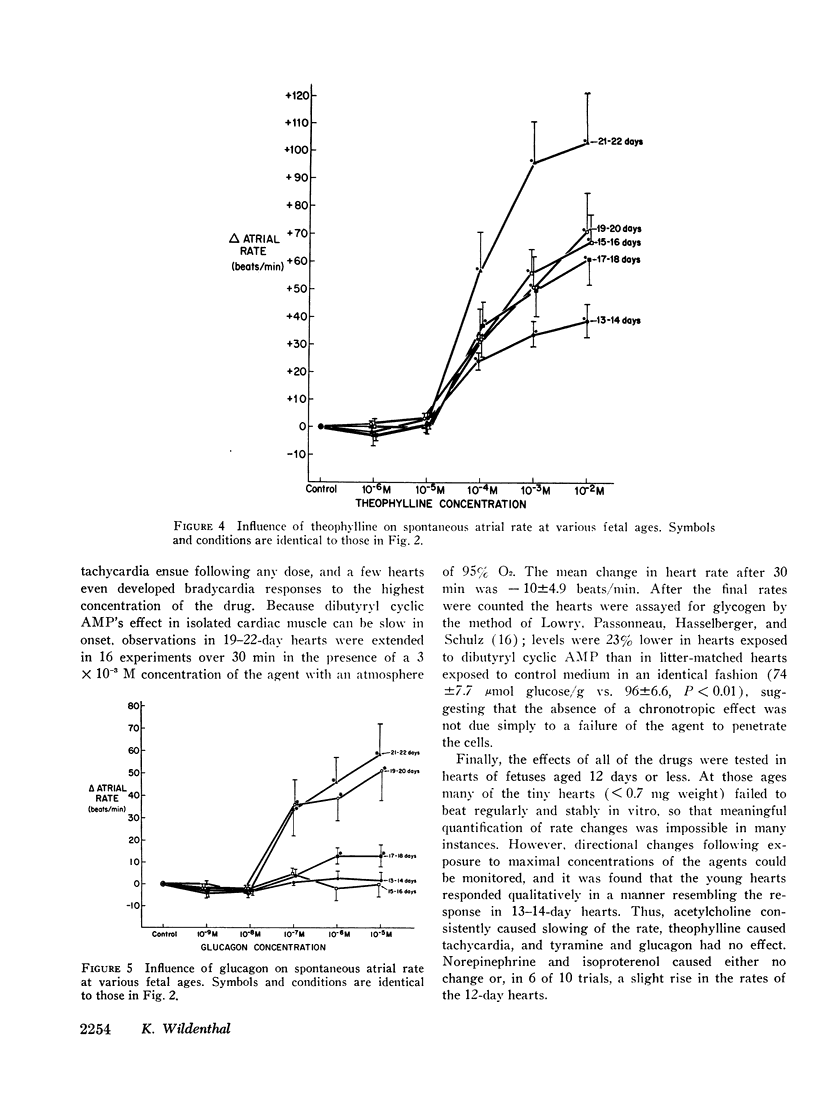
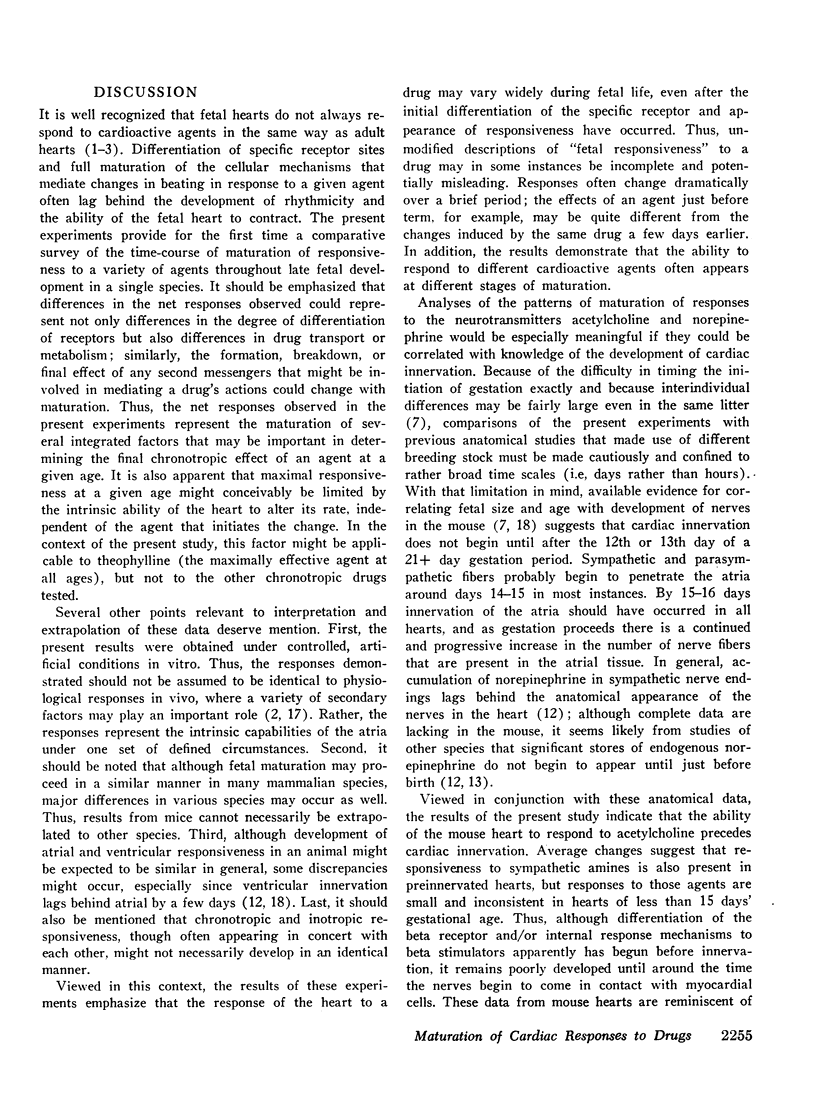
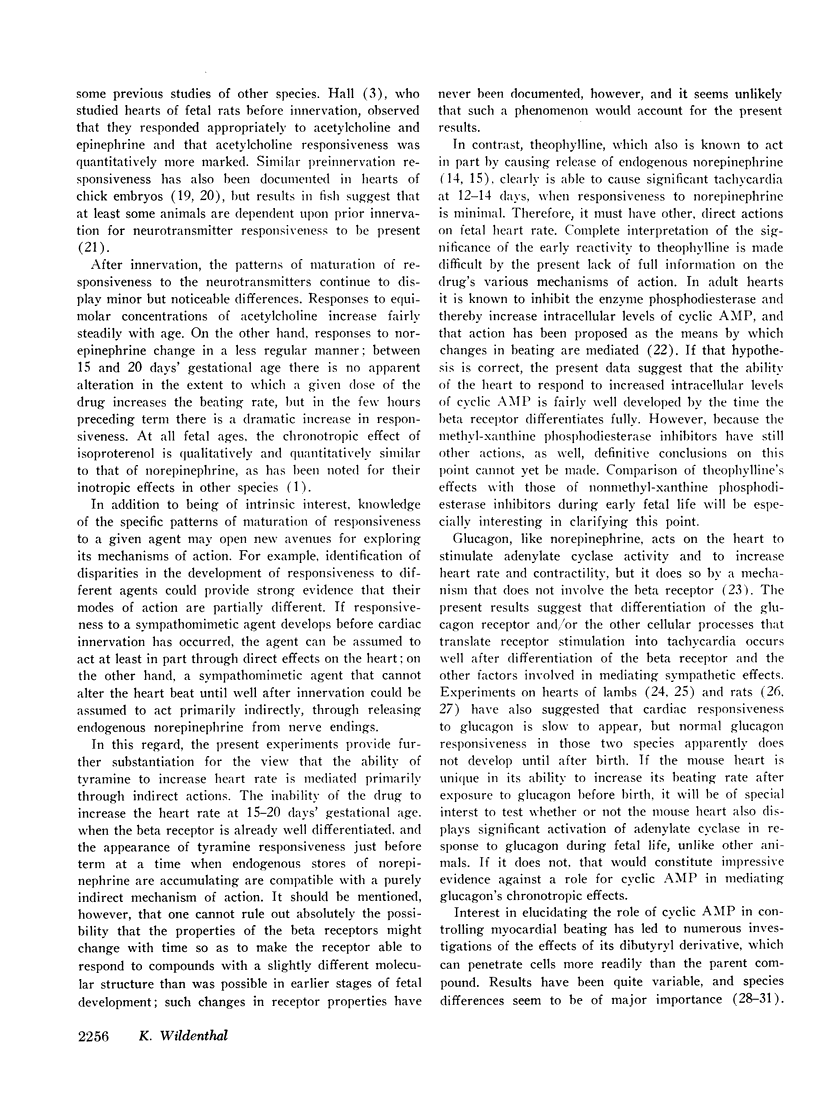
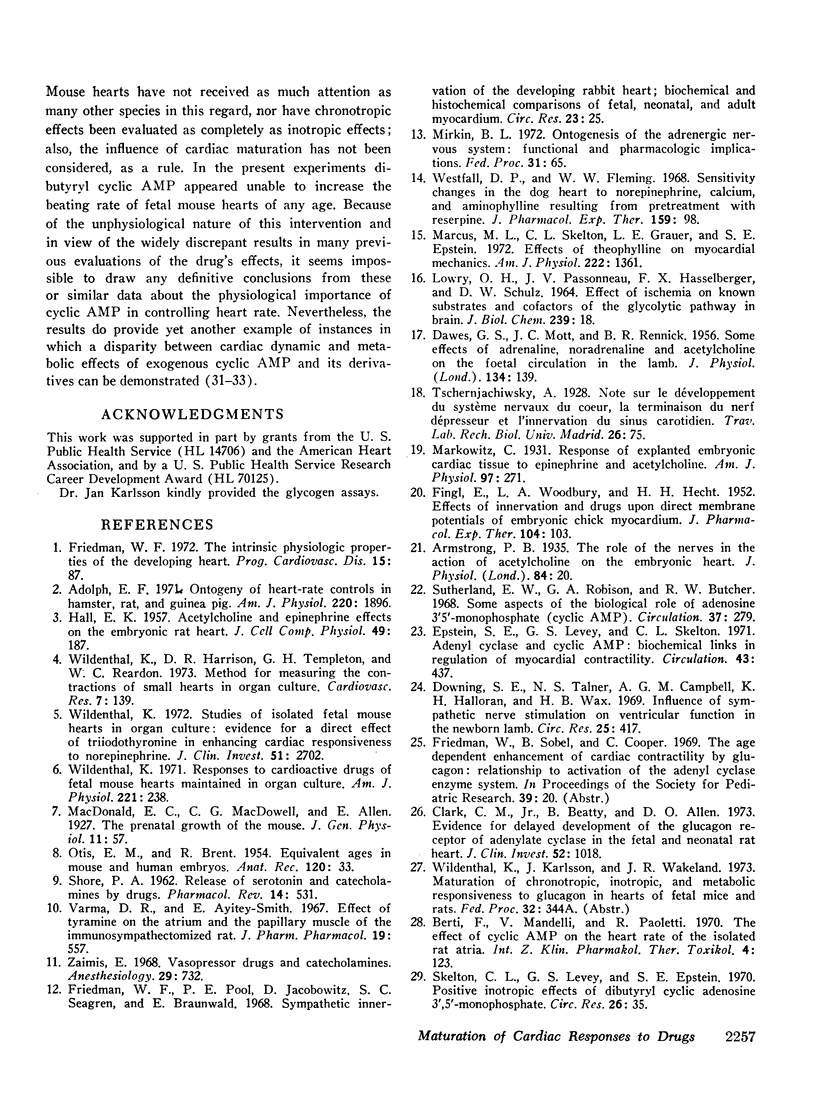
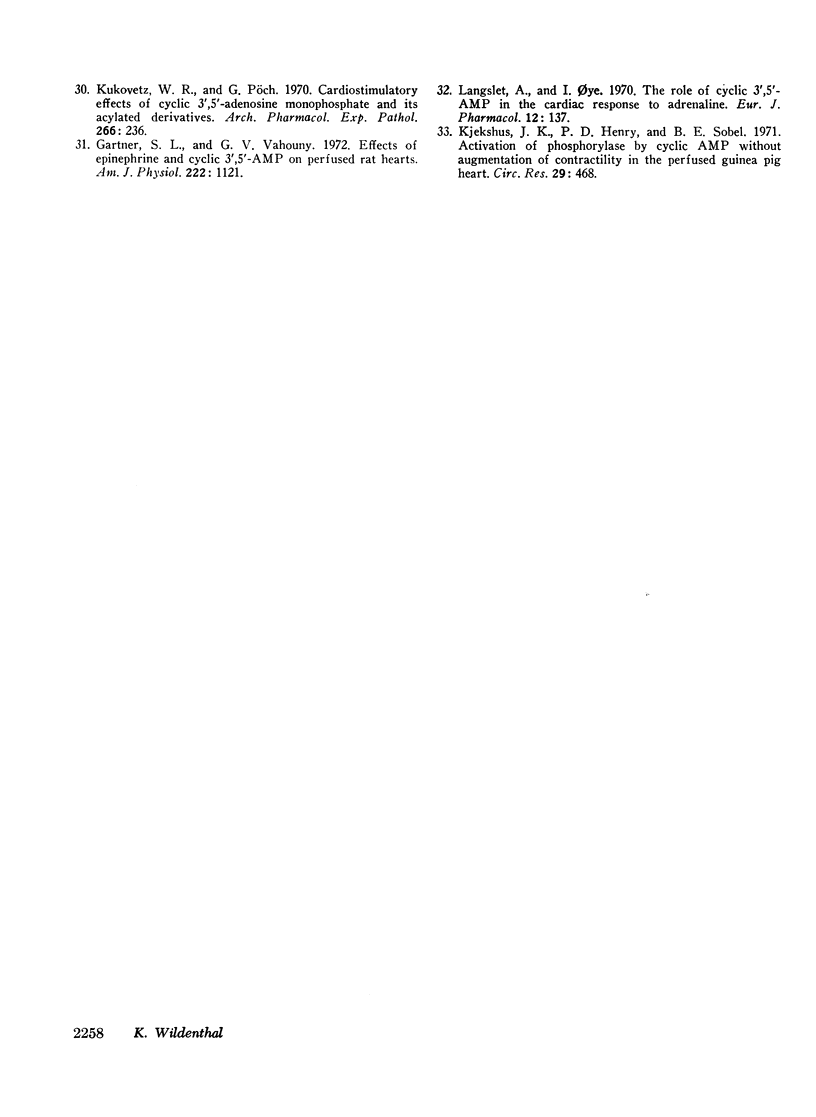
Selected References
These references are in PubMed. This may not be the complete list of references from this article.
- Adolph E. F. Ontogeny of heart-rate controls in hamster, rat, and guinea pig. Am J Physiol. 1971 Jun;220(6):1896–1902. doi: 10.1152/ajplegacy.1971.220.6.1896. [DOI] [PubMed] [Google Scholar]
- Berti F., Mandelli V., Paoletti R. The effect of cyclic AMP on th heart rate of the isolated rat atria. Int Z Klin Pharmakol Ther Toxikol. 1970 Dec;4(1):123–124. [PubMed] [Google Scholar]
- Clark C. M., Jr, Beatty B., Allen D. O. Evidence for delayed development of the glucagon receptor of adenylate cyclase in the fetal and neonatal rat heart. J Clin Invest. 1973 May;52(5):1018–1025. doi: 10.1172/JCI107266. [DOI] [PMC free article] [PubMed] [Google Scholar]
- DAWES G. S., MOTT J. C., RENNICK B. R. Some effects of adrenaline, noradrenaline and acetylcholine on the foetal circulation in the lamb. J Physiol. 1956 Oct 29;134(1):139–148. doi: 10.1113/jphysiol.1956.sp005630. [DOI] [PMC free article] [PubMed] [Google Scholar]
- Downing S. E., Talner N. S., Campbell A. G., Halloran K. H., Wax H. B. Influence of sympathetic nerve stimulation on ventricular function in the newborn lamb. Circ Res. 1969 Oct;25(4):417–428. doi: 10.1161/01.res.25.4.417. [DOI] [PubMed] [Google Scholar]
- Epstein S. E., Levey G. S., Skelton C. L. Adenyl cyclase and cyclic AMP. Biochemical links in the regulation of myocardial contractility. Circulation. 1971 Mar;43(3):437–450. doi: 10.1161/01.cir.43.3.437. [DOI] [PubMed] [Google Scholar]
- FINGL E., WOODBURY L. A., HECHT H. H. Effects of innervation and drugs upon direct membrane potentials of embryonic chick myocardium. J Pharmacol Exp Ther. 1952 Jan;104(1):103–114. [PubMed] [Google Scholar]
- Friedman W. F., Pool P. E., Jacobowitz D., Seagren S. C., Braunwald E. Sympathetic innervation of the developing rabbit heart. Biochemical and histochemical comparisons of fetal, neonatal, and adult myocardium. Circ Res. 1968 Jul;23(1):25–32. doi: 10.1161/01.res.23.1.25. [DOI] [PubMed] [Google Scholar]
- Friedman W. F. The intrinsic physiologic properties of the developing heart. Prog Cardiovasc Dis. 1972 Jul-Aug;15(1):87–111. doi: 10.1016/0033-0620(72)90006-0. [DOI] [PubMed] [Google Scholar]
- Gartner S. L., Vahouny G. V. Effects of epinephrine and cyclic 3',5'-AMP on perfused rat hearts. Am J Physiol. 1972 May;222(5):1121–1124. doi: 10.1152/ajplegacy.1972.222.5.1121. [DOI] [PubMed] [Google Scholar]
- HALL E. K. Acetylcholine and epinephrine effects on the embryonic rat heart. J Cell Physiol. 1957 Apr;49(2):187–200. doi: 10.1002/jcp.1030490203. [DOI] [PubMed] [Google Scholar]
- Kjekshus J. K., Henry P. D., Sobel B. E. Activation of phosphorylase by cyclic AMP without augmentation of contractility in perfused guinea pig heart. Circ Res. 1971 Nov;29(5):468–478. doi: 10.1161/01.res.29.5.468. [DOI] [PubMed] [Google Scholar]
- Kukovetz W. R., Pöch G. Cardiostimulatory effects of cyclic 3',5'-adenosine monophosphate and its acylated derivatives. Naunyn Schmiedebergs Arch Pharmakol. 1970;266(3):236–254. doi: 10.1007/BF00997285. [DOI] [PubMed] [Google Scholar]
- LOWRY O. H., PASSONNEAU J. V., HASSELBERGER F. X., SCHULZ D. W. EFFECT OF ISCHEMIA ON KNOWN SUBSTRATES AND COFACTORS OF THE GLYCOLYTIC PATHWAY IN BRAIN. J Biol Chem. 1964 Jan;239:18–30. [PubMed] [Google Scholar]
- Langslet A., Oye I. The role of cyclic 3'5'-AMP in the cardiac response to adrenaline. Eur J Pharmacol. 1970 Oct;12(2):137–144. doi: 10.1016/0014-2999(70)90058-0. [DOI] [PubMed] [Google Scholar]
- Marcus M. L., Skelton C. L., Grauer L. E., Epstein S. E. Effects of theophylline on myocardial mechanics. Am J Physiol. 1972 Jun;222(6):1361–1365. doi: 10.1152/ajplegacy.1972.222.6.1361. [DOI] [PubMed] [Google Scholar]
- Mirkin B. L. Ontogenesis of the adrenergic nervous system: functional and pharmacologic implications. Fed Proc. 1972 Jan-Feb;31(1):65–73. [PubMed] [Google Scholar]
- OTIS E. M., BRENT R. Equivalent ages in mouse and human embryos. Anat Rec. 1954 Sep;120(1):33–63. doi: 10.1002/ar.1091200104. [DOI] [PubMed] [Google Scholar]
- SHORE P. A. Release of serotonin and catecholamines by drugs. Pharmacol Rev. 1962 Dec;14:531–550. [PubMed] [Google Scholar]
- Skelton C. L., Levey G. S., Epstein S. E. Positive inotropic effects of dibutyryl cyclic adenosine 3',5'-monophosphate. Circ Res. 1970 Jan;26(1):35–43. doi: 10.1161/01.res.26.1.35. [DOI] [PubMed] [Google Scholar]
- Varma D. R., Ayitey-Smith E. Effect of tyramine on the atrium and the papillary muscle of the immunosympathectomized rat. J Pharm Pharmacol. 1967 Aug;19(8):557–559. doi: 10.1111/j.2042-7158.1967.tb09591.x. [DOI] [PubMed] [Google Scholar]
- Westfall D. P., Fleming W. W. Sensitivity changes in the dog heart to norepinephrine, calcium and aminophyline resulting from pretreatment with reserpine. J Pharmacol Exp Ther. 1968 Jan;159(1):98–106. [PubMed] [Google Scholar]
- Wildenthal K., Harrison D. R., Templeton G. H., Reardon W. C. Method for measuring the contractions of small hearts in organ culture. Cardiovasc Res. 1973 Jan;7(1):139–144. doi: 10.1093/cvr/7.1.139. [DOI] [PubMed] [Google Scholar]
- Wildenthal K. Responses to cardioactive drugs of fetal mouse hearts maintained in organ culture. Am J Physiol. 1971 Jul;221(1):238–241. doi: 10.1152/ajplegacy.1971.221.1.238. [DOI] [PubMed] [Google Scholar]
- Wildenthal K. Studies of isolated fetal mouse hearts in organ culture. Evidence for a direct effect of triiodothyronine in enhancing cardiac responsiveness to norepinephrine. J Clin Invest. 1972 Oct;51(10):2702–2709. doi: 10.1172/JCI107089. [DOI] [PMC free article] [PubMed] [Google Scholar]
- Zaimis E. Vasopressor drugs and catecholamines. Anesthesiology. 1968 Jul-Aug;29(4):732–762. doi: 10.1097/00000542-196807000-00020. [DOI] [PubMed] [Google Scholar]


